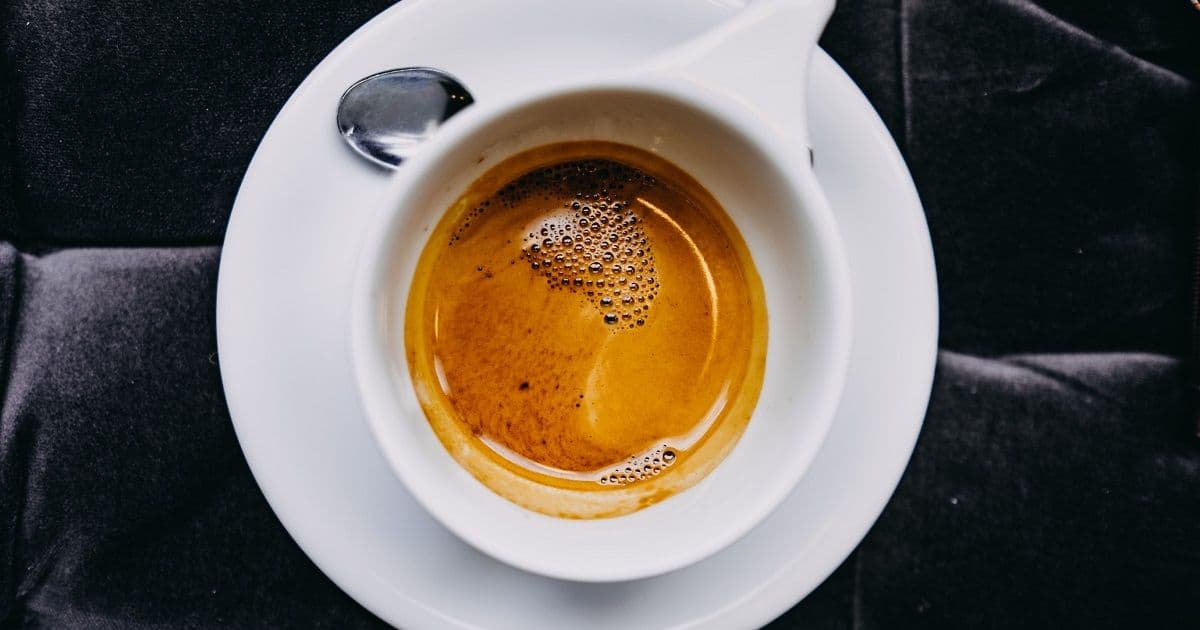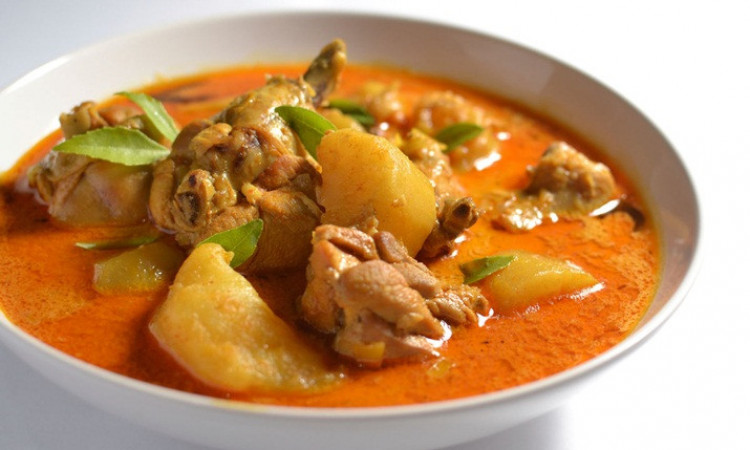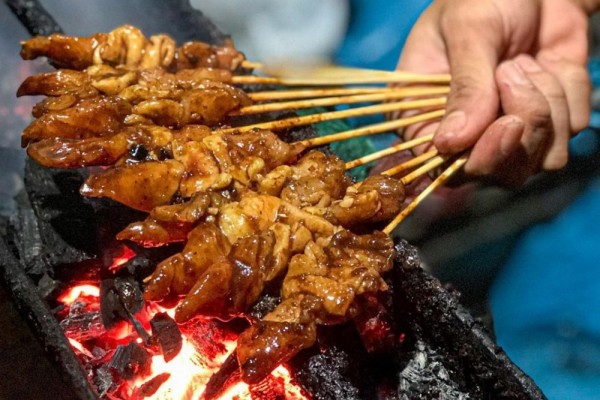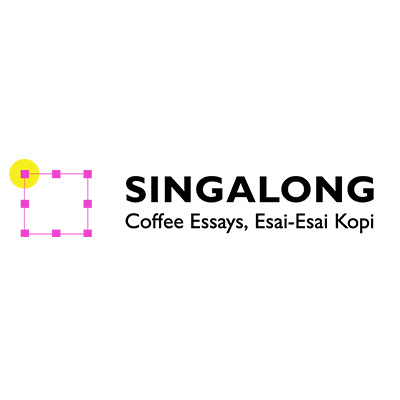Slurp! Pertama kali mengikuti cupping session, bunyi menyeruput yang kadang memekakkan telinga ini selalu mengundang…
No Word for Aftertaste
“Translation is sacred.” – Jay (Paul Dano) in Okja (2017), directed by Bong Joon-ho
Early in 2020 I was tasked with translating the SCA Cupping Form from English to Indonesian. The Cupping Form provides a means of recording important flavor attributes for coffee, and includes fragrance/aroma, flavor, aftertaste, acidity, body, balance, uniformity, clean cup, sweetness, defects, and overall. Many of these attributes are straightforward and easily translatable, but there was one that triggered a strange internal conversation: aftertaste.
Many Indonesians in the specialty coffee world use aftertaste, body, and balance so effortlessly and accurately that it feels like these terms have been part of the Indonesian language all along.
However, when I realized we don’t have a single word for aftertaste, it felt like opening a door to the past and finding it empty.
The first use of the term was recorded as early as 1592, but it only started being used by Indonesians probably in the last decade. According to the Merriam Webster dictionary, aftertaste is the “persistence of a sensation (as of flavor or an emotion) after the stimulating agent or experience has gone.”
In the SCAA (now SCA) Protocols Cupping Specialty Coffee document published in 2015, aftertaste is defined as “the length of positive flavor (taste and aroma) qualities emanating from the back of the palate and remaining after the coffee is expectorated or swallowed.”
Coffee professionals and educators in Indonesia often translate aftertaste into a single phrase: ‘rasa yang tertinggal di lidah’ (the taste that’s left on the tongue). There is no equivalent to the word aftertaste in Kamus Besar Bahasa Indonesia (KBBI), the nation’s most widely used dictionary. As the English term is now generally understood by Indonesians with English proficiency, we seem to have accepted that it’s untranslatable as a single Indonesian word.
At any cupping sessions, whenever baristas are studying their own palettes, and whenever baristas are explaining the coffee to new customers, or in the tasting notes, the word aftertaste—this rather new word that enters Indonesian lexicon—is used.
Read too: The Hand Behind The Brew.

How do you describe the taste of espresso in your own language?
If a word encompasses culture and history, and suggests how the people within that culture think and behave, the fact that there’s no Indonesian word for aftertaste begs the question: before the emergence of specialty coffee, did we ever even think about this lingering feeling on the tongue? If we don’t have a word for it, how do we begin to formulate our thoughts?
Indonesia’s culinary landscape is complex and vibrant. Of our 17,500 islands, 6,000 are home to more than 300 ethnic groups, each with their own food culture and culinary heritage. Within these 300 ethnic groups, there are 700 indigenous languages.
So why don’t we have a word for aftertaste, despite the richness and diversity of our culinary scene? What kind of discussions do we typically have when we talk about our traditional food, drinks, alcohol, tea and coffee?
“When it comes to discussions about food and drinks in Indonesia, the truth is we’ve only recently begun to have more mature conversations,” explained Ade Putri Paramadita, one of Indonesia’s leading culinary storytellers. “Our reaction was always just ‘enak’ (delicious) or ‘tidak enak’ (not delicious),” she continued. “The idea of eating for pleasure is very recent, probably just about a decade old, so the language comes with it. Frankly, we learned about enjoying the more nuanced qualities of food and drink from the West. That’s why some Western terms, such as aftertaste, stay.”
The idea of eating for pleasure is very recent, probably just about a decade old, so the language comes with it. Frankly, we learned about enjoying the more nuanced qualities of food and drink from the West. That’s why some Western terms, such as aftertaste, stay.
Indonesian dishes are complex and most often incorporate dozens of aromatics and spices. Perhaps due to our cuisine’s complexity, our initial reaction when identifying taste sensations is simply to guess the ingredients, particularly the aromatics and spices, and their intensity.
As an agricultural country, our food literature also embodies the entire spectrum of food production, from cultural and religious meanings to medicinal properties and stories of colonization and oppression.
Our significant agricultural history doesn’t mean, however, that we don’t have any words for the sensations we experience through food. They simply haven’t entered the national language. “In the Javanese language, I see more of a tendency to describe sensations instead of flavors,” explained Ade. “For example, a slang word that Javanese use when they drink something highly carbonated is ‘semeriwing’. This actually means kedinginan [cold] or gemetaran [trembling], so it’s used to describe highly carbonated drinks that give you chills.”
In the Javanese language, I see more of a tendency to describe sensations instead of flavors. For example, a slang word that Javanese use when they drink something highly carbonated is ‘semeriwing’. This actually means kedinginan [cold] or gemetaran [trembling], so it’s used to describe highly carbonated drinks that give you chills.
Tria Nuragustina, senior food journalist at Femina, one of Indonesia’s first nation-wide magazines, added that she uses words from the local language whenever she’s writing about a regional culinary scene. “For instance, there’s ‘mlekoh’, which means creamy and full-on umami in Javanese. The use of local language will bring intimacy to the readers,” said Tria. “Or, to describe the strong odor of goat’s meat, they will say ‘prengus’.” Although, as Ade commented, “someone from Papua will have no idea what prengus is like because they don’t have goats!”

Semeriwing (cold, fizzy). Photo Getty.

Mlekoh. Photo Google

Prengus. Photo Instagram @lupakankurus
Read too: Coffee Conversation with Dr.Jeffrey Nielson,
For the majority of the population, Indonesian is a second or even third language. A standardized variety of Malay, when Indonesia declared its Independence in 1945, bahasa Indonesia was declared the national language. At the time, it was the mother tongue of only about 5% of the population.
For a country of 700 languages, this creates an interesting cultural dilemma. “There is an argument that bahasa Indonesia is slowly killing local languages, because people feel obligated to use the formal Indonesian language (bahasa Indonesia yang baik dan benar),” said Ade.
While local languages capture the more nuanced sensations of our tactile experiences, Indonesian needs to catch up. 23,000 words were included in W. J. S. Poerwadarminta’s Kamus Umum Bahasa Indonesia, one of the earliest versions of KBBI, published in 1953. The same number of words in various local languages are proposed for inclusion in KBBI every year, but only around 1,000 are accepted. The latest KBBI, released in 2015, includes just over 120,000 words.
As well as the phrase ‘rasa yang tertinggal di lidah’, some national publications have used the term ‘jejak rasa’ to describe aftertaste. Jejak means trace or impression, but for many coffee professionals, this doesn’t encapsulate its full meaning.
According to coffee mentor and champion barista Mikael Jasin, “aftertaste can also describe the aroma and mouthfeel of the coffee, while jejak rasa emphasizes taste.” Others have argued that jejak rasa implies historical and cultural pathways of a particular food, also known as foodways. For coffee professionals, jejak rasa is the closest translation, but it’s still not quite right.
Perhaps the real difficulty in translating aftertaste lies in something more obvious. “Whether you are using the word aftertaste or jejak rasa, you will inevitably need to explain what these terms mean to most people in Indonesia. This is because not only are the terms new, the whole concept is new,” Ade explained. This is different to the Javanese word semeriwing, which comes organically from what the Javanese experience. With aftertaste we need to work backwards, introducing the term first, after which follows understanding, then the ability to discuss it.
Whether you are using the word aftertaste or jejak rasa, you will inevitably need to explain what these terms mean to most people in Indonesia. This is because not only are the terms new, the whole concept is new.
This doesn’t mean we shouldn’t attempt to translate certain English terms or nominate a word in a local language for their closest representation. For the sake of expanding Kamus Besar Bahasa Indonesia, perhaps we should. After all, it’s from words that discussions bloom.
Dhea is a coffee and language lover based in Bali.






